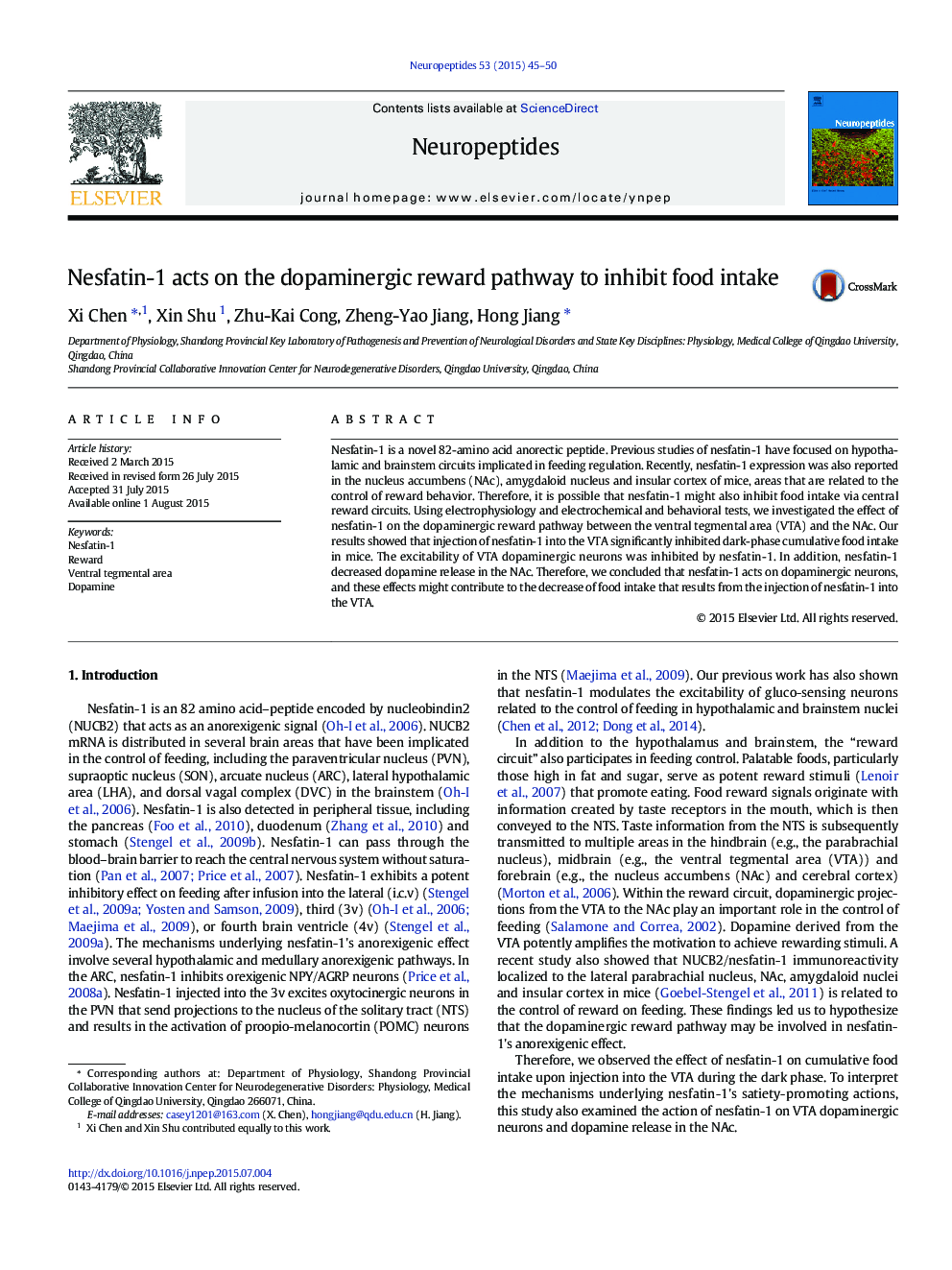| Article ID | Journal | Published Year | Pages | File Type |
|---|---|---|---|---|
| 2808012 | Neuropeptides | 2015 | 6 Pages |
•Nesfatin-1 inhibits food intake after infusion into the VTA.•Nesfatin-1 inhibits the excitability of VTA dopaminergic neurons.•Nesfatin-1 decreases dopamine release in the NAc
Nesfatin-1 is a novel 82-amino acid anorectic peptide. Previous studies of nesfatin-1 have focused on hypothalamic and brainstem circuits implicated in feeding regulation. Recently, nesfatin-1 expression was also reported in the nucleus accumbens (NAc), amygdaloid nucleus and insular cortex of mice, areas that are related to the control of reward behavior. Therefore, it is possible that nesfatin-1 might also inhibit food intake via central reward circuits. Using electrophysiology and electrochemical and behavioral tests, we investigated the effect of nesfatin-1 on the dopaminergic reward pathway between the ventral tegmental area (VTA) and the NAc. Our results showed that injection of nesfatin-1 into the VTA significantly inhibited dark-phase cumulative food intake in mice. The excitability of VTA dopaminergic neurons was inhibited by nesfatin-1. In addition, nesfatin-1 decreased dopamine release in the NAc. Therefore, we concluded that nesfatin-1 acts on dopaminergic neurons, and these effects might contribute to the decrease of food intake that results from the injection of nesfatin-1 into the VTA.
